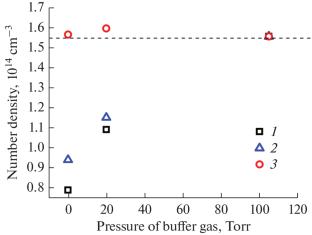Particle Concentration Measurements during Fast Recording of Absorption Spectra
Abstract—
The applicability of the light absorption method for measuring particle concentrations during fast recording of absorption spectra in different ranges of frequency tuning rates and in different measurement schemes has been considered. If the molecular resonance time is shorter than the decay times of induced particle polarization in the open space of the medium, scanning of the transmission radiation frequency is accompanied by well-known transient coherent effects, the stationary spectrum is distorted, and oscillations arise. In this case the conventional total absorption methods can hardly be applied directly. A method based on reconstructing the stationary spectrum from the wing of the experimentally observed absorption line is proposed. When carrying out highly sensitive measurements of absorption in the medium inside of a high-Q external optical cavity, absorption line distortions arise as well, but at much lower frequency tuning rates. The observed spectra exhibit asymmetry, oscillations are not observed, and the violation mechanism is related in this case to the limitation of the probe-light coherence length (in comparison with the effective optical path length) and finite photon lifetime in the cavity. It is shown that direct application of the classical relations linking the total absorption with the particle concentration yields adequate results in this situation. The role of instrumental distortions in integral measurements is discussed.


 求助内容:
求助内容: 应助结果提醒方式:
应助结果提醒方式:


